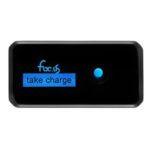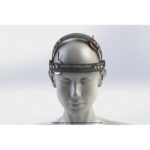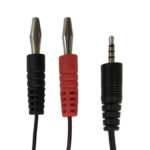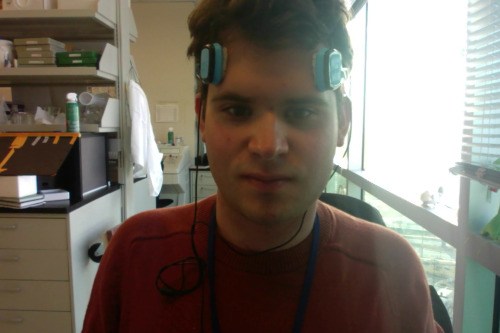Robin at Caputron dropped me a note to let me know they are now carrying the Foc.us V2 device. Purchased alone, it does not include electrodes, but there is an option to add their ‘starter kit’ which includes the Caputron Universal Strap, Caputron Banana Adapter Cable for Focus Device, and Choice of 2×2 or 3×3 Electrodes. (Use diytdcs at checkout for generous discount). Foc.us V2 Device at Caputron.
If what attracted you to tDCS is all the news (and hype) around the possible benefits, cognitive and otherwise, that tDCS may provide, then I recommend the Foc.us V2 device. It’s had a thorough going over, and apart from the (then included) electrodes, proved to be an amazing piece of gear. tDCS, tACS, tRNS, tPCS in a single sub $300 unit with a software interface!
- Foc.us V2
- Universal Strap
- Banana Plug for Foc.us
- Caputron Electrode
Elsewhere on the blog I’ve stated that I recommend the ActivaDose ll device. This is an FDA approved device – it’s NOT FDA approved for tDCS – it’s approval is for use as an Iontophoresis device. The point is that the electronics and workmanship have attained an FDA level of approval. It’s simple and straightforward to use.
The only reason I haven’t recommended other tDCS devices on the market is because I’m not in a position to analyze the quality of their workmanship myself. I recommend the Activadose ll because people looking to experiment with tDCS for the treatment of depression can’t be assumed to have a toolset for determining the mechanical workmanship of an electrical device they’re going to be attaching to their heads! The Activadose ll, an FDA approved device, at least assures the buyer the device itself is of high quality. It’s also more likely to retain some resale value in the event someone decides later on to sell it.
I recommend the Foc.us V2 because of it’s variety of stimulation modes. Folks who are sophisticated enough about neurostimulation to be experimenting with cognitive enhancement would obviously benefit from having the option to test other forms of stimulation that frequently come up in the scientific literature.
When you use code diytdcs at checkout at Caputron you get a discount, and I get a small commission.





